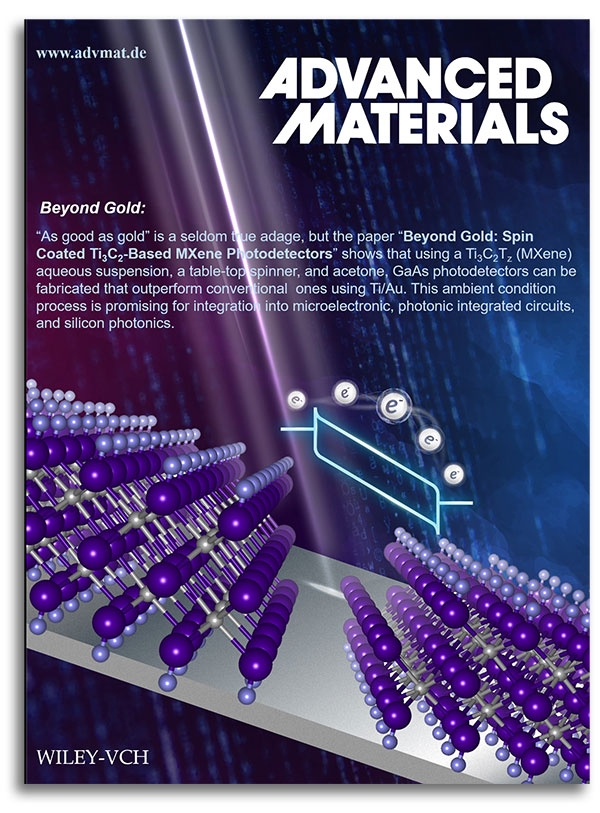 Advanced Materials
Advanced Materials
In a new paper that has appeared as a front piece of the prestigious journal Advanced Materials (impact factor 25.809), representatives from Drexel's Departments of Electrical and Computer Engineering (ECE) and Materials Science and Engineering (MSE) show that with nothing more sophisticated than a Ti3C2Tz (MXene) aqueous colloidal suspension, a table top spinner, and acetone, GaAs photodetectors can be fabricated that outperform conventional Ti/Au electrodes deposited on the same GaAs substrates.
The ECE team consisted of graduate student Kiana Montazeri, Assistant Research Professor Pouya Dianat, and Professor Bahram Nabet (co-senior author). MSE is represented by Professor Michel Barsoum (co-senior author) and Post-Doctoral Associate Louisiane Verger. Dr. Marc Currie of the Naval Research Lab also served as a collaborator.
The ambient condition process can be used in gates of FETs as well as photodectors, and can be readily integrated into microelectronic, photonic-integrated circuit and silicon photonics processes, with a wide spectrum of possible applications ranging from optical sensing to LiDAR, to optical tele/data communications.
The image to the right serves as the frontispiece to the article, titled, "Beyond Gold: Spin Coated Ti3C2-Based MXene Photodetectors."